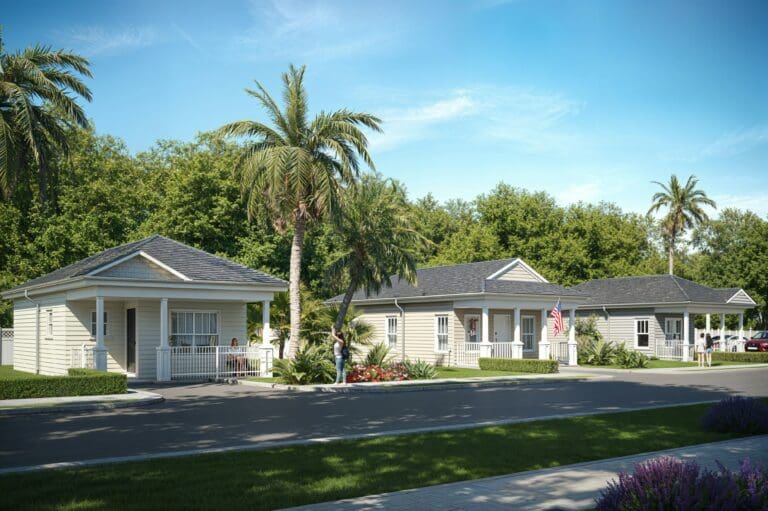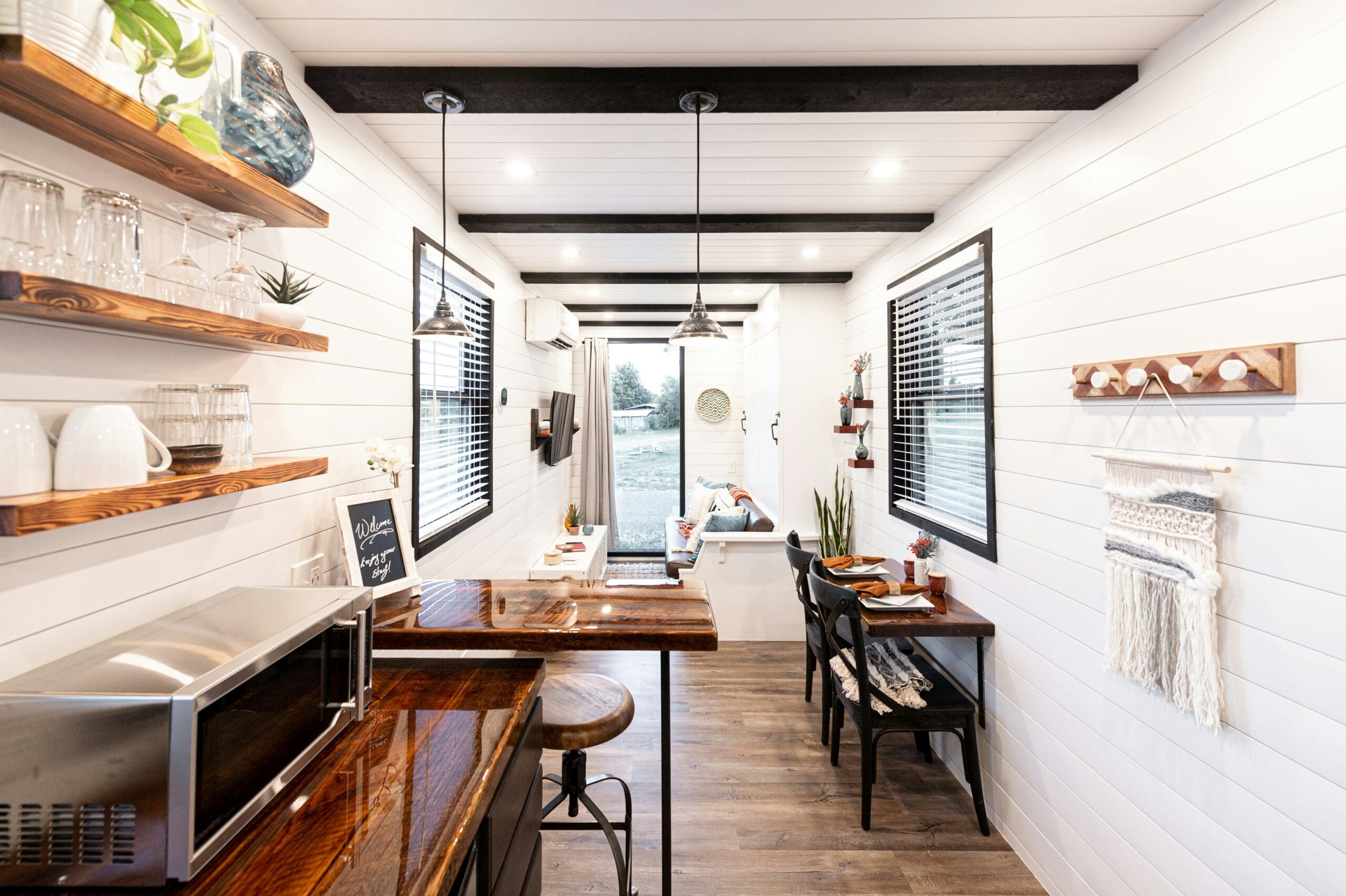Choosing the perfect spot for your tiny home is critical in realizing your downsized living ambitions. From nearby amenities to local zoning regulations, a wide range of factors influence where you place your tiny home.
Whether you envision a scenic plot near the Florida coastline or a peaceful community in Broward or Palm Beach County, understanding these considerations can help you make an informed decision. Below, we’ll explore key points for selecting the best location to ensure comfort and convenience.
Local Zoning and Regulations
Every municipality has specific rules governing tiny homes and accessory dwelling units (ADUs). These regulations determine whether you can permanently situate a tiny home on a particular piece of land. Some regions allow tiny homes on wheels, while others require a fixed foundation.
In Broward and Palm Beach County, zoning laws can vary even between neighborhoods, so check your local county or city zoning office to confirm whether a location is tiny-home-friendly.
Zoning requirements impact important day-to-day factors like necessary utility connections and waste disposal. Since these regulations can sometimes change, always stay current on any policy updates. Understanding your local zoning code early is one of the best ways to avoid unexpected roadblocks.
Accessibility to Amenities and Services
While tiny homes are often celebrated for minimalism, you still need access to essential services. Consider proximity to grocery stores, healthcare providers, and recreational spots. If you rely on a car, evaluate traffic patterns and distance to major roads. For those who prefer biking or public transportation, research the availability of bike lanes, bus routes, or train stations.
In Florida, easy access to local destinations can enhance your tiny home lifestyle. For instance, being a short drive from the beaches in Broward County or near the vibrant cultural centers in Palm Beach County can strengthen the practicality and enjoyment of your day-to-day routine. Moreover, living in a space that allows you to quickly get to essential services saves time and reduces commuting costs.
Community and Lifestyle Preferences
Finding the right neighborhood for your tiny home can enrich your connection and belonging. Think about how you’d like to interact with your neighbors. For example, some tiny home villages offer communal spaces such as gardens or shared facilities, fostering a close-knit environment. Living in a supportive community can be especially beneficial if you’re new to tiny homes and eager to learn from others who have made the transition.
If you prefer more solitude, a private property with a greater distance from neighbors could be the ideal choice. Either way, be mindful of community guidelines and local culture to ensure your presence is well-received. 56% of Americans say they would consider living in a tiny home—indicating there’s growing acceptance and interest in this lifestyle.
Climate and Environmental Factors
Florida’s sunny climate is a major draw for many tiny homeowners, but the region also experiences hurricane seasons and high humidity. Because tiny homes have less structural mass compared to traditional homes, consider durability and weather preparedness. Explore these important questions:
- Is the location prone to flooding or windstorms?
- Are there strict building codes related to hurricane resistance?
- Is there sufficient shade or ventilation to keep indoor temperatures comfortable?
While you won’t find an official “flood-proof” or “storm-proof” guarantee, researching FEMA flood zone maps and consulting local climate resources can give you a clearer picture of how to protect your investment.
Privacy and Outdoor Space
Even if you crave a minimalist lifestyle, having an outdoor area to expand your living space can be a bonus. A small yard, a deck, or the potential for a garden can do wonders for relaxation and entertaining.
Consider whether you’ll have room for a grill or an outdoor seating area. If gardening is a hobby, assess soil quality and available sunlight. These simple yet meaningful aspects add value to the overall tiny home experience.
If you plan on frequently hosting guests, ensure your chosen plot aligns with local parking ordinances or neighborhood guidelines. And if the property is part of an HOA, confirm that they permit ADUs or tiny homes, as restrictions can limit your plans for expansions like patios or pavilions.
Financial Considerations
From the cost of the land to utility hookups, finances play a central role in choosing your ideal tiny home site. In popular areas of Broward and Palm Beach County, land prices can fluctuate, so setting a clear budget helps narrow down your options. Once you find a potential plot, compare the expenses of connecting water, sewer, and electricity with alternatives like off-grid solar setups or composting toilets.
At times, you may find that well-situated land with existing infrastructure slightly increases your initial investment but pays off in time and convenience. Weigh your budget constraints against the daily ease of living that a well-developed property can provide.
Future Goals
Tiny homes offer more flexibility than many people realize, especially if they’re built on wheels. Perhaps you’ll want to move in the future to a new community or relocate the tiny home onto a more spacious property.
If you anticipate moving your home within the next few years, check that the location you choose allows for relatively easy transport. Paved roads and fewer height restrictions can make a significant difference if you planning to travel or relocate for new job opportunities.
On the other hand, if you want to settle in long-term, confirm that your land supports expansion or remodeling plans, like adding a separate office shed or patio. Some tiny homeowners eventually transition to a hybrid approach, blending indoor and outdoor living with partial expansions.
Your Tiny Home in Florida
The right location can shape the entire tiny home experience—from social opportunities to long-term property value. By prioritizing zoning regulations, community preferences, financial considerations, and access to amenities, you can find a spot that balances freedom and convenience year-round. If you are searching for a tiny home or ADU in Broward or Palm Beach County, you’ll want a partner that understands the local landscape. Visit us at One and Only Tiny Homes to connect with a team familiar with Florida regulations and dedicated to crafting the perfect tiny home solution for your lifestyle. We look forward to helping you navigate your journey to the ideal location and design—leading you one step closer to enjoying the benefits of a well-planned tiny home.


